Deep Reinforcement Learning Hands-On
Why subscribe?
PacktPub.com
Contributors
About the author
About the reviewers
Packt is Searching for Authors Like You
Preface
Who this book is for
What this book covers
To get the most out of this book
Download the example code files
Download the color images
Conventions used
Get in touch
Reviews
1. What is Reinforcement Learning?
Learning – supervised, unsupervised, and reinforcement
RL formalisms and relations
Reward
The agent
The environment
Actions
Observations
Markov decision processes
Markov process
Markov reward process
Markov decision process
Summary
2. OpenAI Gym
The anatomy of the agent
Hardware and software requirements
OpenAI Gym API
Action space
Observation space
The environment
Creation of the environment
The CartPole session
The random CartPole agent
The extra Gym functionality – wrappers and monitors
Wrappers
Monitor
Summary
3. Deep Learning with PyTorch
Tensors
Creation of tensors
Scalar tensors
Tensor operations
GPU tensors
Gradients
Tensors and gradients
NN building blocks
Custom layers
Final glue – loss functions and optimizers
Loss functions
Optimizers
Monitoring with TensorBoard
TensorBoard 101
Plotting stuff
Example – GAN on Atari images
Summary
4. The Cross-Entropy Method
Taxonomy of RL methods
Practical cross-entropy
Cross-entropy on CartPole
Cross-entropy on FrozenLake
Theoretical background of the cross-entropy method
Summary
5. Tabular Learning and the Bellman Equation
Value, state, and optimality
The Bellman equation of optimality
Value of action
The value iteration method
Value iteration in practice
Q-learning for FrozenLake
Summary
6. Deep Q-Networks
Real-life value iteration
Tabular Q-learning
Deep Q-learning
Interaction with the environment
SGD optimization
Correlation between steps
The Markov property
The final form of DQN training
DQN on Pong
Wrappers
DQN model
Training
Running and performance
Your model in action
Summary
7. DQN Extensions
The PyTorch Agent Net library
Agent
Agent's experience
Experience buffer
Gym env wrappers
Basic DQN
N-step DQN
Implementation
Double DQN
Implementation
Results
Noisy networks
Implementation
Results
Prioritized replay buffer
Implementation
Results
Dueling DQN
Implementation
Results
Categorical DQN
Implementation
Results
Combining everything
Implementation
Results
Summary
References
8. Stocks Trading Using RL
Trading
Data
Problem statements and key decisions
The trading environment
Models
Training code
Results
The feed-forward model
The convolution model
Things to try
Summary
9. Policy Gradients – An Alternative
Values and policy
Why policy?
Policy representation
Policy gradients
The REINFORCE method
The CartPole example
Results
Policy-based versus value-based methods
REINFORCE issues
Full episodes are required
High gradients variance
Exploration
Correlation between samples
PG on CartPole
Results
PG on Pong
Results
Summary
10. The Actor-Critic Method
Variance reduction
CartPole variance
Actor-critic
A2C on Pong
A2C on Pong results
Tuning hyperparameters
Learning rate
Entropy beta
Count of environments
Batch size
Summary
11. Asynchronous Advantage Actor-Critic
Correlation and sample efficiency
Adding an extra A to A2C
Multiprocessing in Python
A3C – data parallelism
Results
A3C – gradients parallelism
Results
Summary
12. Chatbots Training with RL
Chatbots overview
Deep NLP basics
Recurrent Neural Networks
Embeddings
Encoder-Decoder
Training of seq2seq
Log-likelihood training
Bilingual evaluation understudy (BLEU) score
RL in seq2seq
Self-critical sequence training
The chatbot example
The example structure
Modules: cornell.py and data.py
BLEU score and utils.py
Model
Training: cross-entropy
Running the training
Checking the data
Testing the trained model
Training: SCST
Running the SCST training
Results
Telegram bot
Summary
13. Web Navigation
Web navigation
Browser automation and RL
Mini World of Bits benchmark
OpenAI Universe
Installation
Actions and observations
Environment creation
MiniWoB stability
Simple clicking approach
Grid actions
Example overview
Model
Training code
Starting containers
Training process
Checking the learned policy
Issues with simple clicking
Human demonstrations
Recording the demonstrations
Recording format
Training using demonstrations
Results
TicTacToe problem
Adding text description
Results
Things to try
Summary
14. Continuous Action Space
Why a continuous space?
Action space
Environments
The Actor-Critic (A2C) method
Implementation
Results
Using models and recording videos
Deterministic policy gradients
Exploration
Implementation
Results
Recording videos
Distributional policy gradients
Architecture
Implementation
Results
Things to try
Summary
15. Trust Regions – TRPO, PPO, and ACKTR
Introduction
Roboschool
A2C baseline
Results
Videos recording
Proximal Policy Optimization
Implementation
Results
Trust Region Policy Optimization
Implementation
Results
A2C using ACKTR
Implementation
Results
Summary
16. Black-Box Optimization in RL
Black-box methods
Evolution strategies
ES on CartPole
Results
ES on HalfCheetah
Results
Genetic algorithms
GA on CartPole
Results
GA tweaks
Deep GA
Novelty search
GA on Cheetah
Results
Summary
References
17. Beyond Model-Free – Imagination
Model-based versus model-free
Model imperfections
Imagination-augmented agent
The environment model
The rollout policy
The rollout encoder
Paper results
I2A on Atari Breakout
The baseline A2C agent
EM training
The imagination agent
The I2A model
The Rollout encoder
Training of I2A
Experiment results
The baseline agent
Training EM weights
Training with the I2A model
Summary
References
18. AlphaGo Zero
Board games
The AlphaGo Zero method
Overview
Monte-Carlo Tree Search
Self-play
Training and evaluation
Connect4 bot
Game model
Implementing MCTS
Model
Training
Testing and comparison
Connect4 results
Summary
References
Book summary
Other Books You May Enjoy
Leave a review - let other readers know what you think
Index
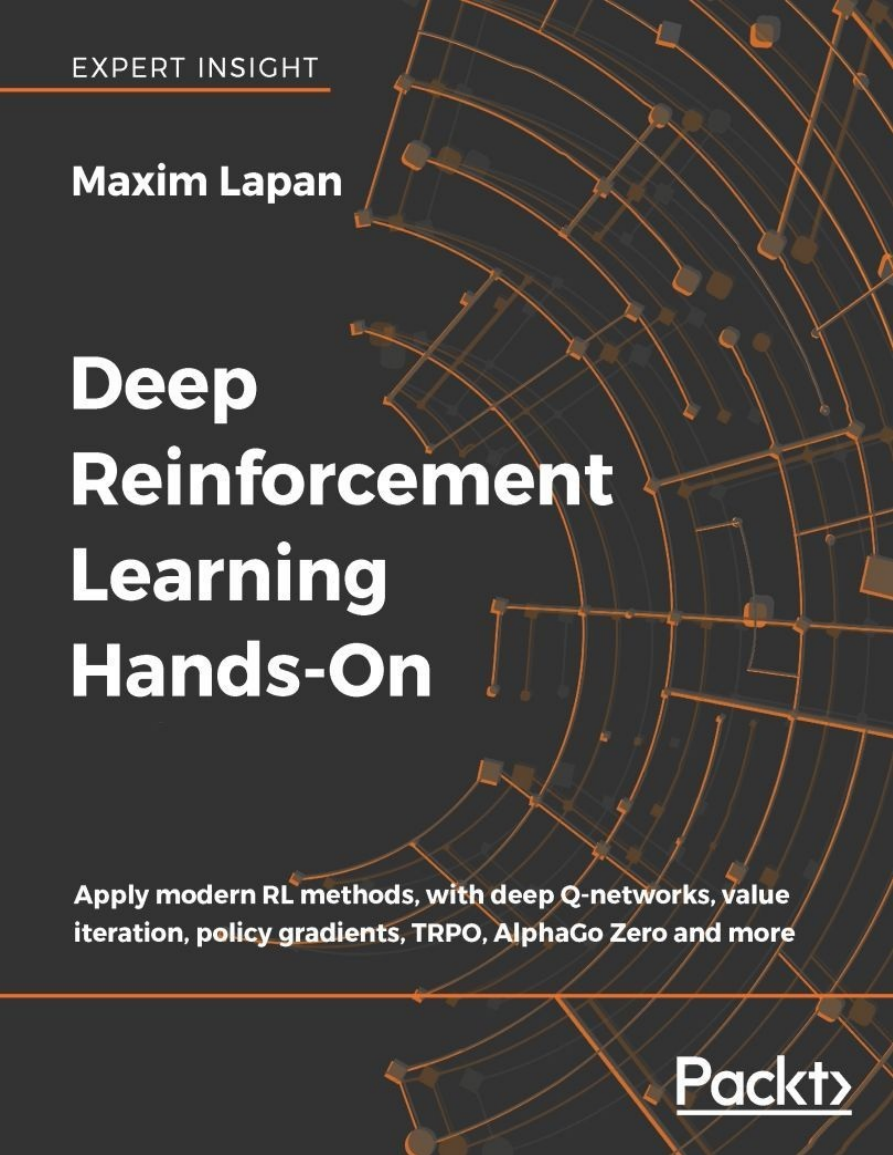
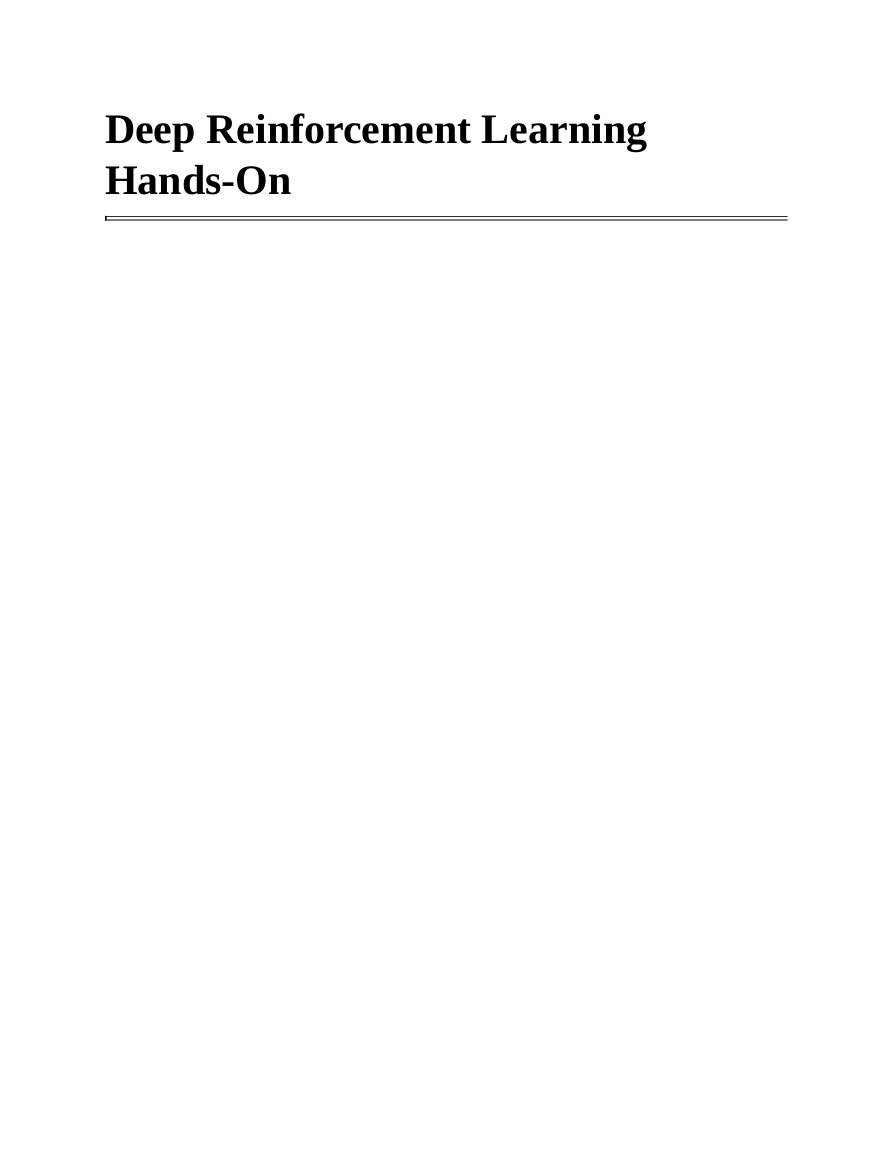
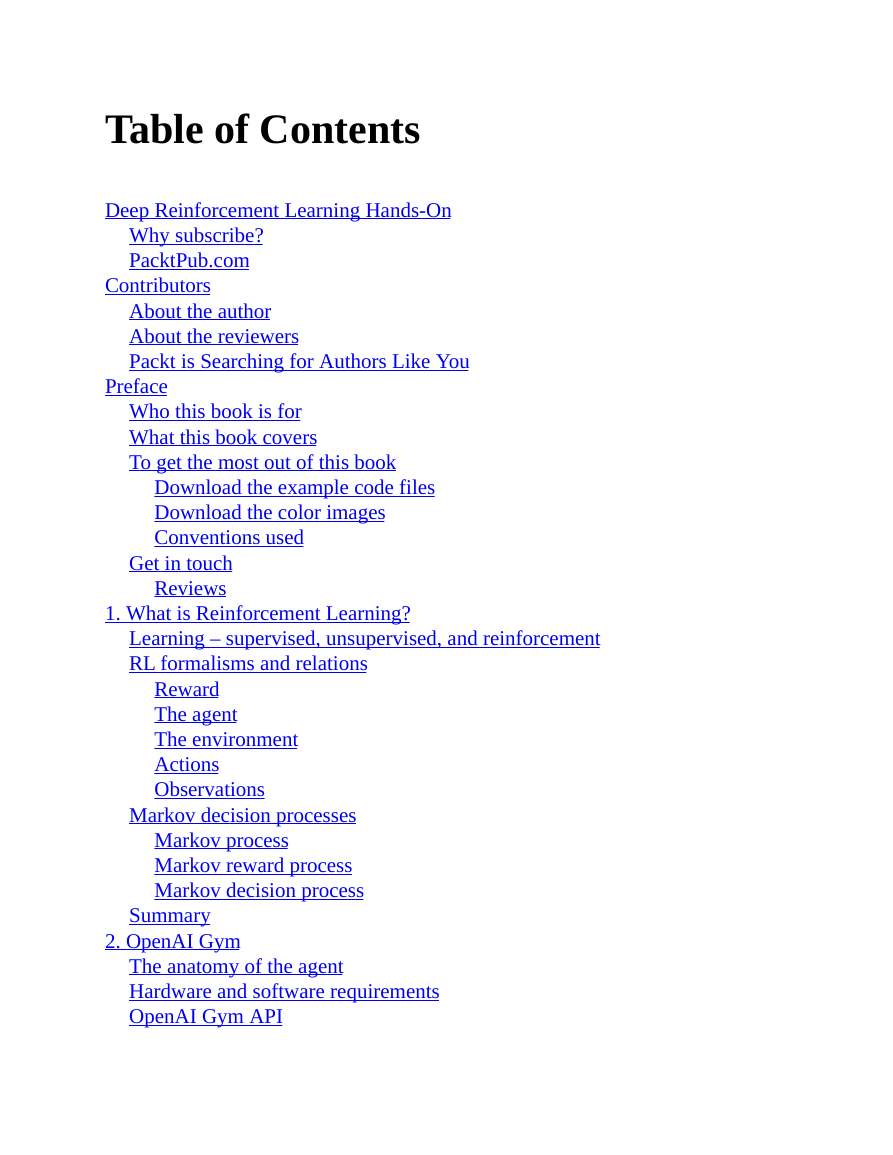
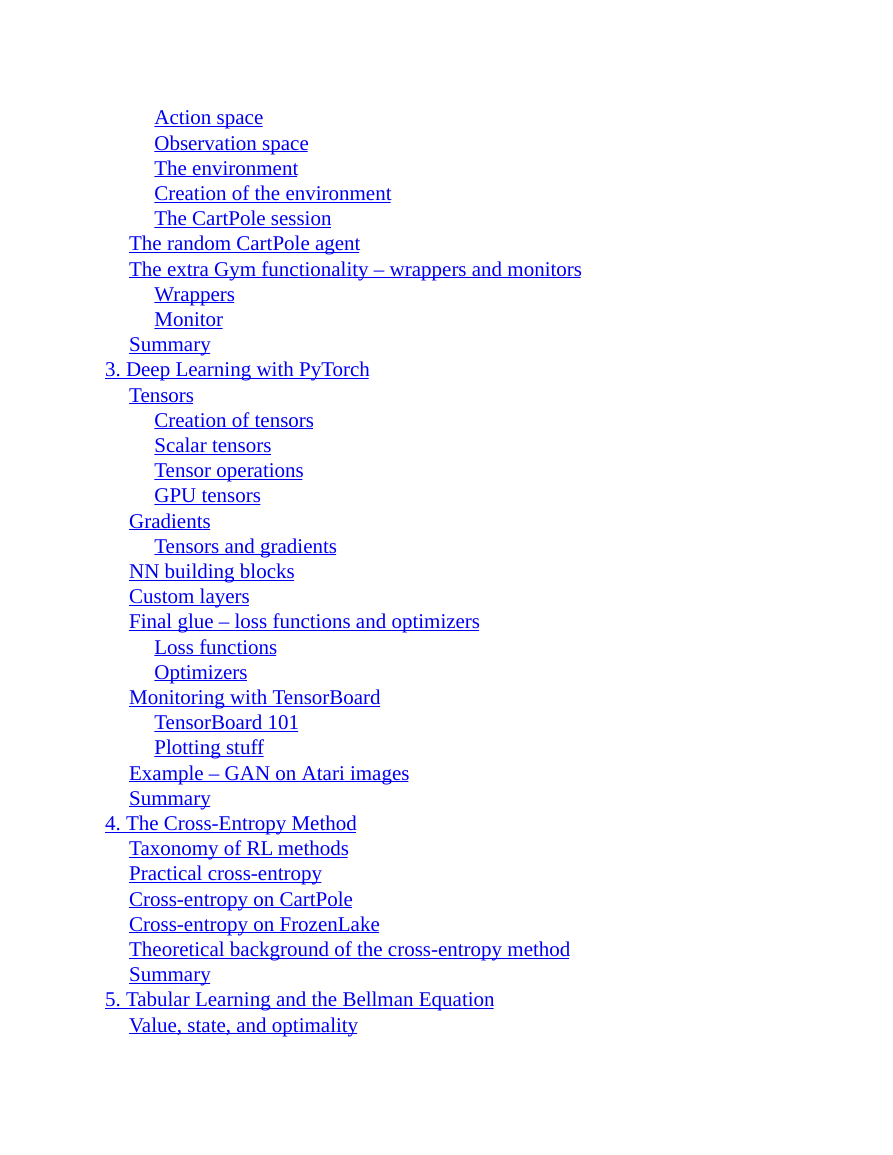
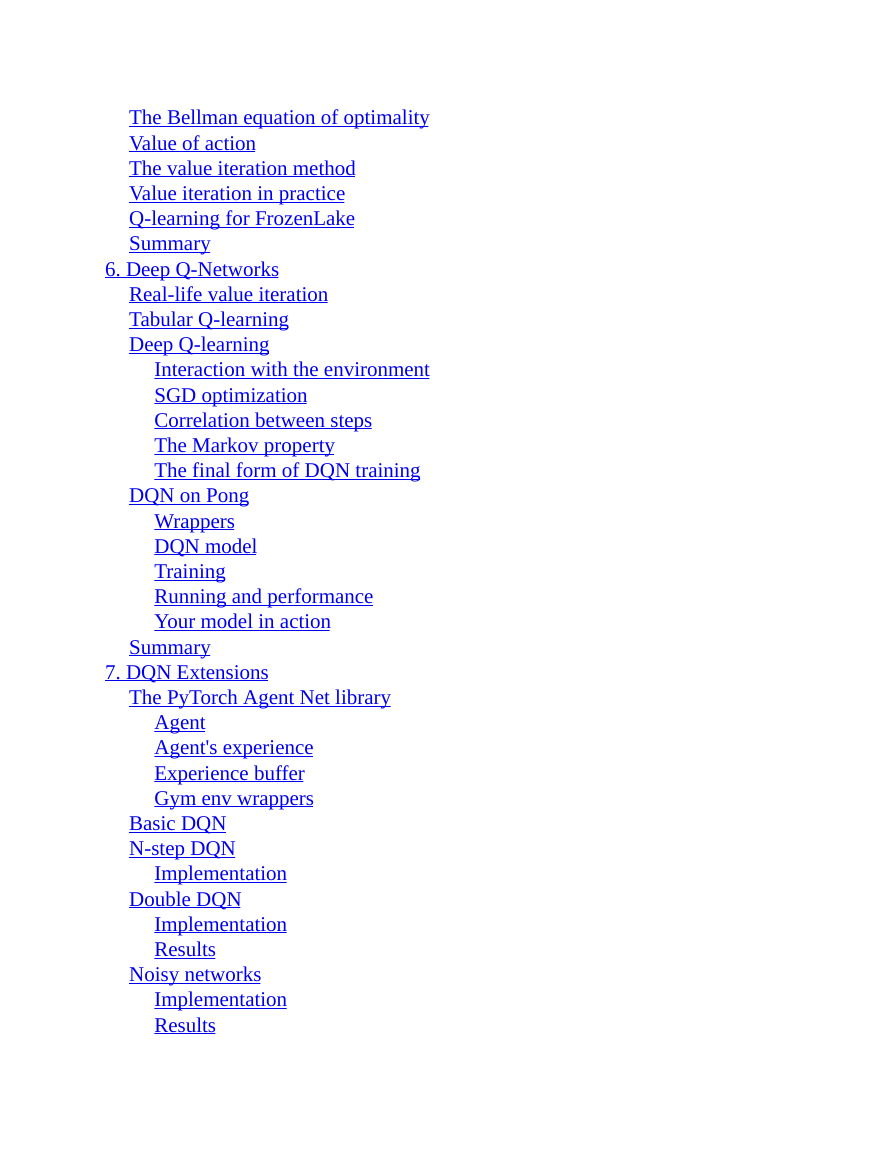
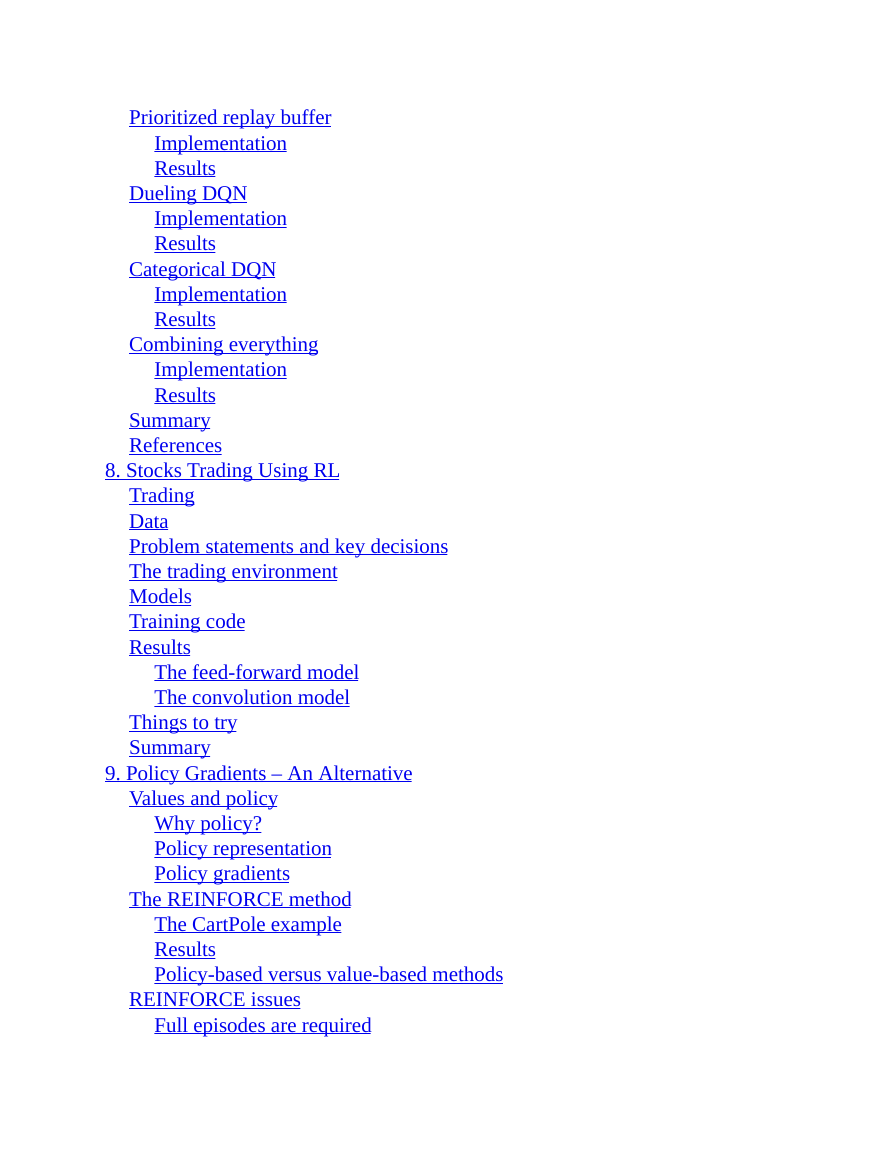
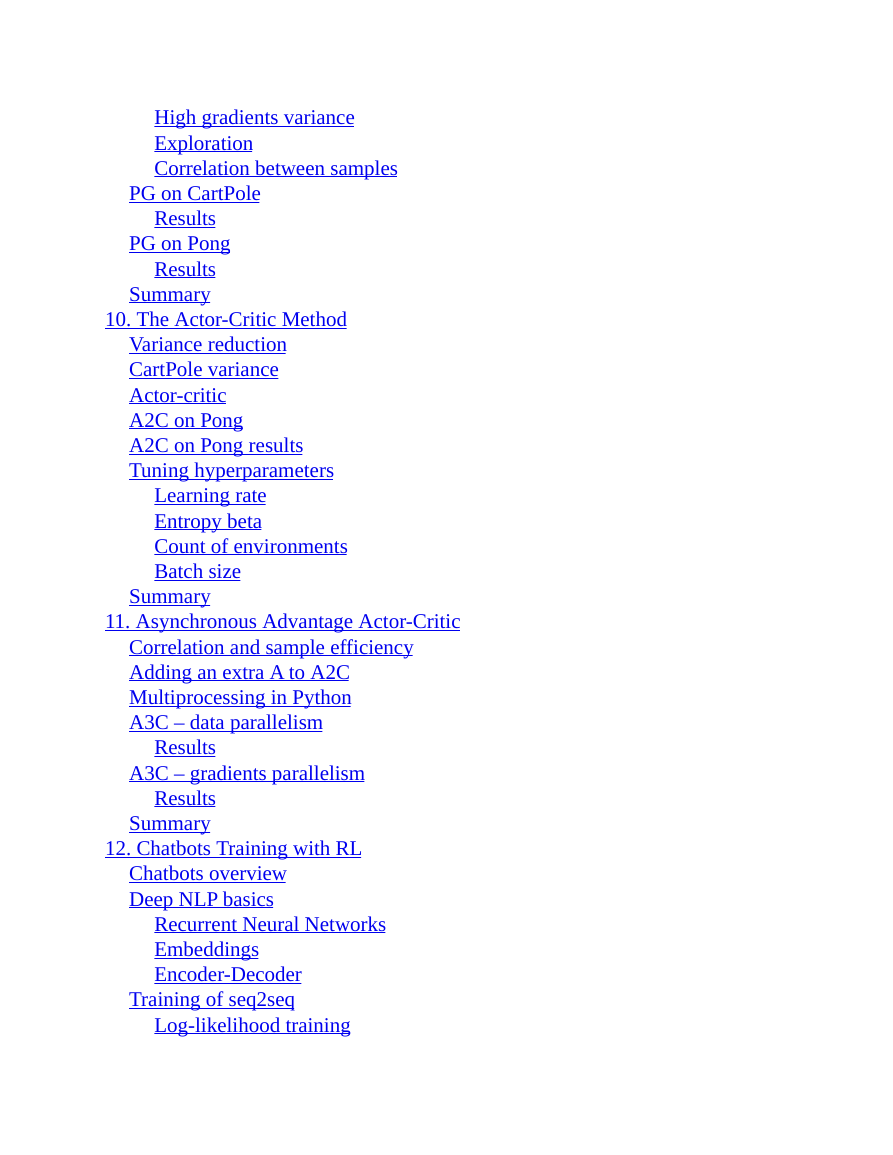
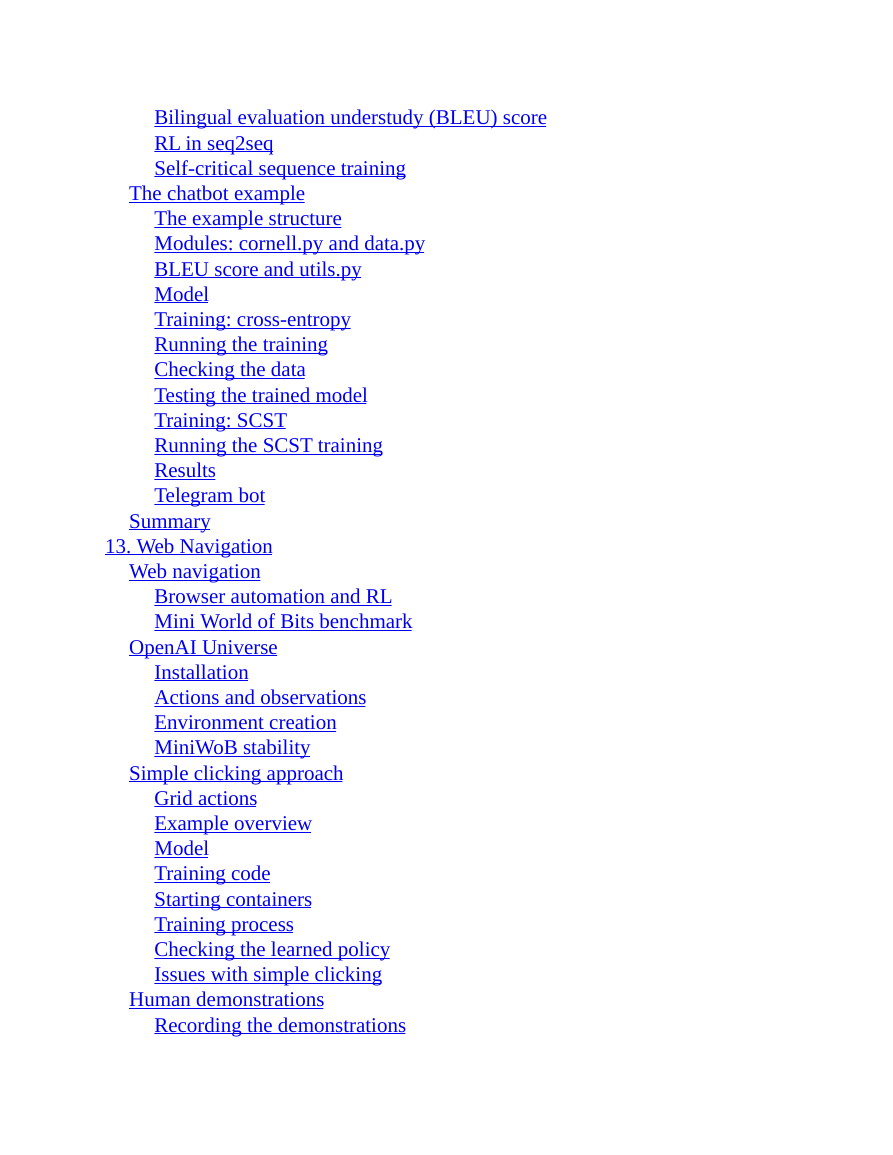








 2023年江西萍乡中考道德与法治真题及答案.doc
2023年江西萍乡中考道德与法治真题及答案.doc 2012年重庆南川中考生物真题及答案.doc
2012年重庆南川中考生物真题及答案.doc 2013年江西师范大学地理学综合及文艺理论基础考研真题.doc
2013年江西师范大学地理学综合及文艺理论基础考研真题.doc 2020年四川甘孜小升初语文真题及答案I卷.doc
2020年四川甘孜小升初语文真题及答案I卷.doc 2020年注册岩土工程师专业基础考试真题及答案.doc
2020年注册岩土工程师专业基础考试真题及答案.doc 2023-2024学年福建省厦门市九年级上学期数学月考试题及答案.doc
2023-2024学年福建省厦门市九年级上学期数学月考试题及答案.doc 2021-2022学年辽宁省沈阳市大东区九年级上学期语文期末试题及答案.doc
2021-2022学年辽宁省沈阳市大东区九年级上学期语文期末试题及答案.doc 2022-2023学年北京东城区初三第一学期物理期末试卷及答案.doc
2022-2023学年北京东城区初三第一学期物理期末试卷及答案.doc 2018上半年江西教师资格初中地理学科知识与教学能力真题及答案.doc
2018上半年江西教师资格初中地理学科知识与教学能力真题及答案.doc 2012年河北国家公务员申论考试真题及答案-省级.doc
2012年河北国家公务员申论考试真题及答案-省级.doc 2020-2021学年江苏省扬州市江都区邵樊片九年级上学期数学第一次质量检测试题及答案.doc
2020-2021学年江苏省扬州市江都区邵樊片九年级上学期数学第一次质量检测试题及答案.doc 2022下半年黑龙江教师资格证中学综合素质真题及答案.doc
2022下半年黑龙江教师资格证中学综合素质真题及答案.doc